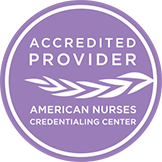Whether physical changes to the brain occur from heightened levels of stress hormones, as some believe, or those hormones are merely contributing factors, it is clear that the brains of people with PTSD have been changed during the traumatic event. Researchers using both magnetic resonance imaging (MRI) and positron emission tomography (PET) scans have shown a decreased volume of the hippocampus, left amygdala, and anterior cingulate cortex in patients with PTSD (Sareen, 2024). It is as though the environmental shock of the traumatic event physically produces a structural change in how a person stores memories. How this happens, or even why, is not yet known.
During high-stress events, our bodies release adrenaline, a chemical responsible for increasing blood pressure, heart rate, pulse, and the transfer of glucose to muscles. It does this automatically and immediately in the face of fear, without conscious volition. This "hard-wired" response to terror primes our physiology to fight for our lives or to make a run to safety.
Once the immediate danger is over, or at least once the perceived risk has lessened, our body initiates a cascade of chemical reactions designed to "defuse" the reaction fear initiated. This closing down, or damping, of the stress response, is linked to an essential hormone, cortisol.
The hypothalamic-pituitary-adrenal axis (HPA) is the body’s major response system to stress. The release of cortisol activates the sympathetic nervous pathway system, which then generates negative feedback to both the hypothalamus and the anterior pituitary. This feedback system is compromised in people with PTSD (Al Jowf et al., 2023; Sherin & Nemeroff, 2011; Van der Kolk, 2015).
Research has determined that if your body is low or lacking in the hormone cortisol, you cannot effectively or efficiently shut down the stress reaction prompted by the impulse for flight or fight. Without adequate cortisol, you continue to feel the stress effects caused by adrenaline for much longer. Some studies have shown that victims of trauma who possess a higher "normal" level of catecholamines (stimulating hormones of which adrenaline is a member) tend to develop PTSD more easily than those without elevated levels. Whether or not the lingering high levels of stress hormones cause traumatic memories to be "imprinted" or remembered in much greater clarity and detail than would otherwise be the case is unknown. Victims of PTSD are consistent, however, in showing a measurable surge of stress hormones when they are reminded of their trauma (Back, 2024).
An Acute Stress Disorder (ASD) occurs in the initial month after a person has experienced, witnessed, or been confronted with an event that threatens physical or psychological injury, death, or great harm. This harm could have been directed toward the individual, targeted others, or affected material objects of great value to that person. One example of this was the loss of the World Trade Center twin towers on September 11, 2001, an occurrence that traumatized an entire nation. When exposed to such an event, especially when it is beyond that person's ability to influence or control realistically, intense feelings of helplessness, fear, or horror may result. The intent in identifying ASD is to limit the development of PTSD, which is diagnosed only after four weeks of symptoms following exposure (Bryant, 2024). It is unclear why some people only experience ASD, and other people progress to PTSD, but some believe that it relates to neurobiological processes (Benedek & West, 2024).
The neurobiological response to psychological trauma depends not only on the “stressor characteristics but also on the factors specific to the individual (Sherin & Nemeroff, 2011)”. Genetic, developmental, and experiential factors predispose people to the development of PTSD. In the last decade, “etiological models have been developed to explain the interplay between biology, environment, and mind in manifesting the disease. Examples of those models include the diathesis-stress and the biopsychosocial models” (Al Jowf et al., 2023). Research supports an association between genetic variants and an increased risk for PTSD, including hypothalamic-pituitary-adrenal axis (HPA) dysfunction, neurotransmitter dysregulation, and alterations in brain circuits (Al Jowf et al., 2023; Lanius, Frewen, & Brand, 2024; Van der Kolk, 2015).
According to Kunimatsu et al. (2020), functional magnetic resonance neuroimaging (fMRI) scans of patients who are experiencing PTSD demonstrate focal atrophy of the gray matter, altered fractional anisotropy, and altered focal neural activity and functional connectivity. Several regions of the brain are impacted by the traumatic event, including the medial and dorsolateral prefrontal cortex, orbitofrontal cortex, insula, lentiform nucleus, amygdala, hippocampus and para-hippocampus, anterior and posterior cingulate cortex, precuneus, cuneus, fusiform and lingual gyri, and the white matter tracts connecting these brain regions. Kunimatsu et al. (2020) found that alterations in the brain seen on fMRI scans support the hypothesis that abnormal fear learning and reactions to a perceived threat are highly correlational to the development of PTSD.






